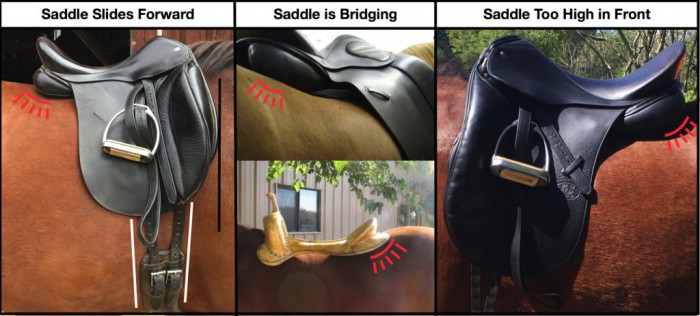28-04-2017 11:24:33  Image by: saddlery
Image by: saddlery
Saddle fit and management
This study investigated the associations between lameness, thoracolumbar asymmetries, saddle-fit and rider position. This data was obtained from veterinary examination and provided by the riders themselves. In order to identify the main differences in rider perceptions and outcomes from the vet’s.
A sample size of 506 horses was used, whereof 205 questionnaires were completed by the riders. After gait analysis, horses were divided in 4 groups:
- Hindlimb lameness or other gait abnormalities
- Forelimb and hindlimb lameness
- Forelimb lameness
- Non-lame
After that they were conducted to the following tests:
- Clinical examination (height, weight, Body condition score)
- Objective assessment of thoracolumbar symmetry
- Subjective assessment of the thoracolumbar region
- Dynamic examination (assessment of: lameness, saddle slip and rider crookedness)
- Saddle slip gradation
- Assessment of saddle fit
- Questionnaire for the riders
The results showed a significant association between the 30 horses who had saddle slip and hindlimb lameness or gait abnormalities. However only 2 riders had considered a link between saddle slip and lameness. 38.5% of the riders had back pain, which was associated with ill-fitting saddles and decreased gait quality of the horse. Thoracolumbar asymmetries were negatively associated with ill-fitting saddles and positively associated with rider skill level. Well-fitted saddles were checked more often.
Therefor saddle fit should be checked more often than once a year and there should be more awareness around equine professionals for lameness, saddle slip, ill-fitting saddles and rider crookedness.
> From: Dyson et al., Equine Vet J 47 (2015) 415-21. All rights reserved to EVJ Ltd.. Click here for the online summary.
 Image by: saddlerysolutions
Image by: saddlerysolutions
